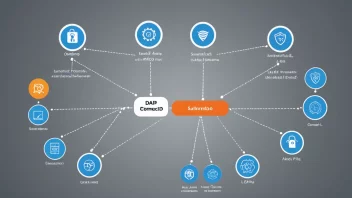Introduction
The digital advertising landscape is undergoing a significant transformation, largely due to the advent of blockchain technology. As advertisers and consumers alike seek greater transparency, security, and efficiency, blockchain emerges as a promising solution to many of the challenges faced in this space. This article explores common questions about how blockchain can reshape digital advertising.
What is blockchain technology?
Blockchain technology is a decentralized ledger system that records transactions across multiple computers in a manner that ensures the security and integrity of the data. Each transaction, or block, is linked to the previous one, creating a chain of records that is nearly impossible to alter.
How can blockchain improve transparency in digital advertising?
One of the primary benefits of blockchain in digital advertising is its ability to enhance transparency. Advertisers can track the journey of their ads from publisher to consumer, ensuring that they receive accurate data on ad placements and performance. This transparency helps build trust between advertisers and publishers, reducing fraudulent activities.
What role does blockchain play in combating ad fraud?
Ad fraud is a significant issue in the digital advertising industry, costing billions annually. Blockchain can help combat this by providing a transparent and immutable record of ad transactions. By verifying each transaction on the blockchain, stakeholders can ensure that ads are viewed by real users, thus reducing the chances of fraud.
How does blockchain enable better data privacy?
With increasing concerns over data privacy, blockchain can empower consumers to control their own data. Through decentralized systems, users can choose what data to share with advertisers, ensuring that their personal information is protected. This shift towards data ownership can enhance consumer trust and engagement.
Can blockchain streamline the payment process in digital advertising?
Yes, blockchain can significantly streamline the payment process in digital advertising. By enabling smart contracts, payments can be automated and executed instantly upon the completion of predefined conditions. This reduces the need for intermediaries, lowering transaction costs and speeding up payments to publishers.
What are some real-world examples of blockchain in digital advertising?
Several companies are already utilizing blockchain to enhance their advertising strategies. For instance, AdEx is a decentralized ad exchange that leverages blockchain to connect advertisers and publishers directly, eliminating middlemen and increasing efficiency. Another example is Brave Browser, which uses blockchain to reward users for viewing ads, thereby creating a more user-centric advertising model.
What challenges does blockchain face in digital advertising?
Despite its potential, blockchain technology faces several challenges in digital advertising. These include scalability issues, the need for industry-wide adoption, and regulatory concerns. Additionally, educating stakeholders about blockchain's benefits and functionalities is crucial to overcoming resistance to change.
What is the future of blockchain in digital advertising?
The future of blockchain in digital advertising looks promising. As more companies recognize the advantages of transparency, security, and efficiency, we can expect broader adoption of blockchain solutions. Innovations in this space could lead to a more equitable and effective digital advertising ecosystem.
Conclusion
Blockchain technology has the potential to revolutionize the digital advertising landscape by enhancing transparency, combating fraud, and empowering consumers. As the industry continues to evolve, embracing blockchain solutions could lead to a more trustworthy and efficient advertising environment.






